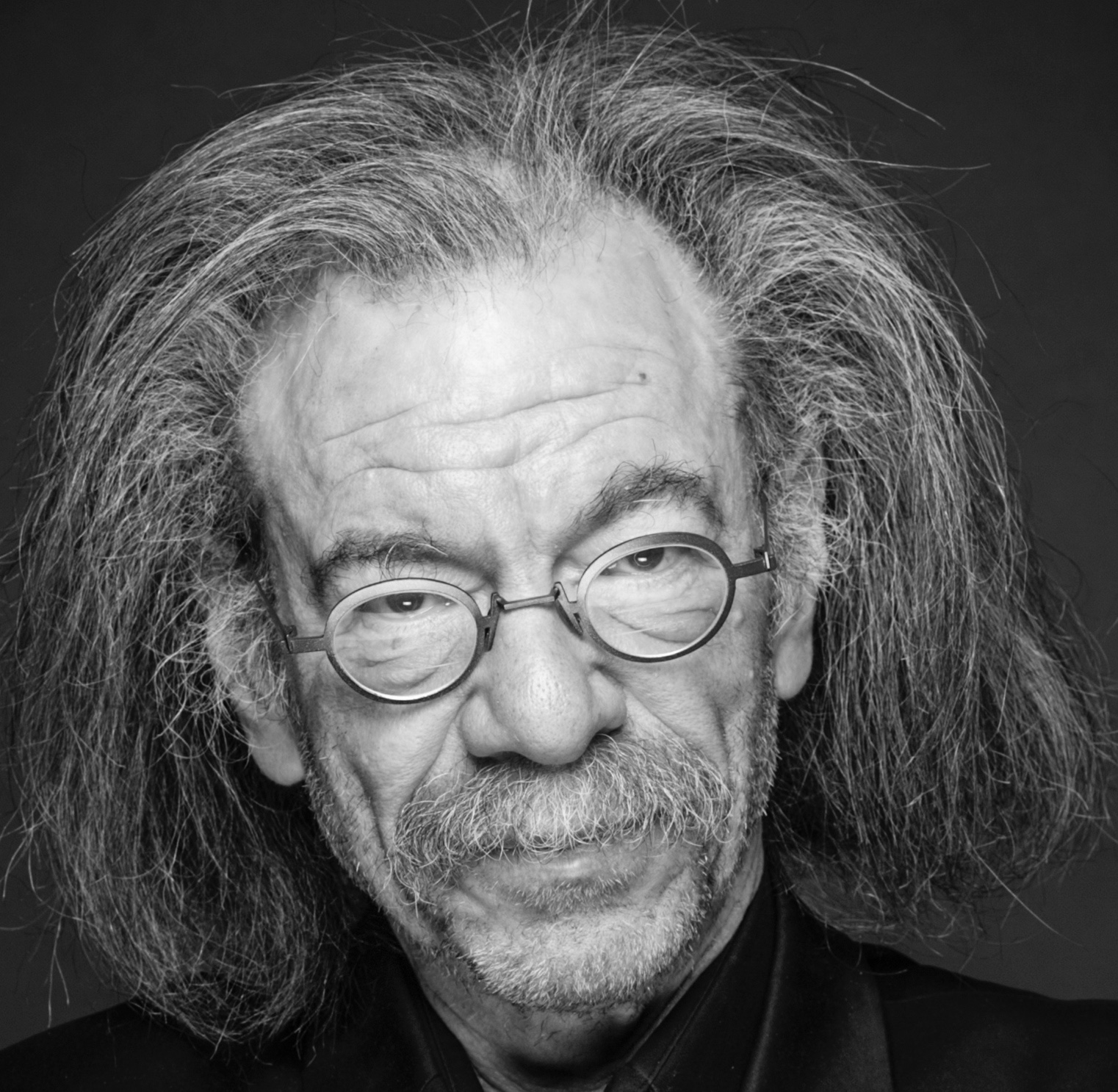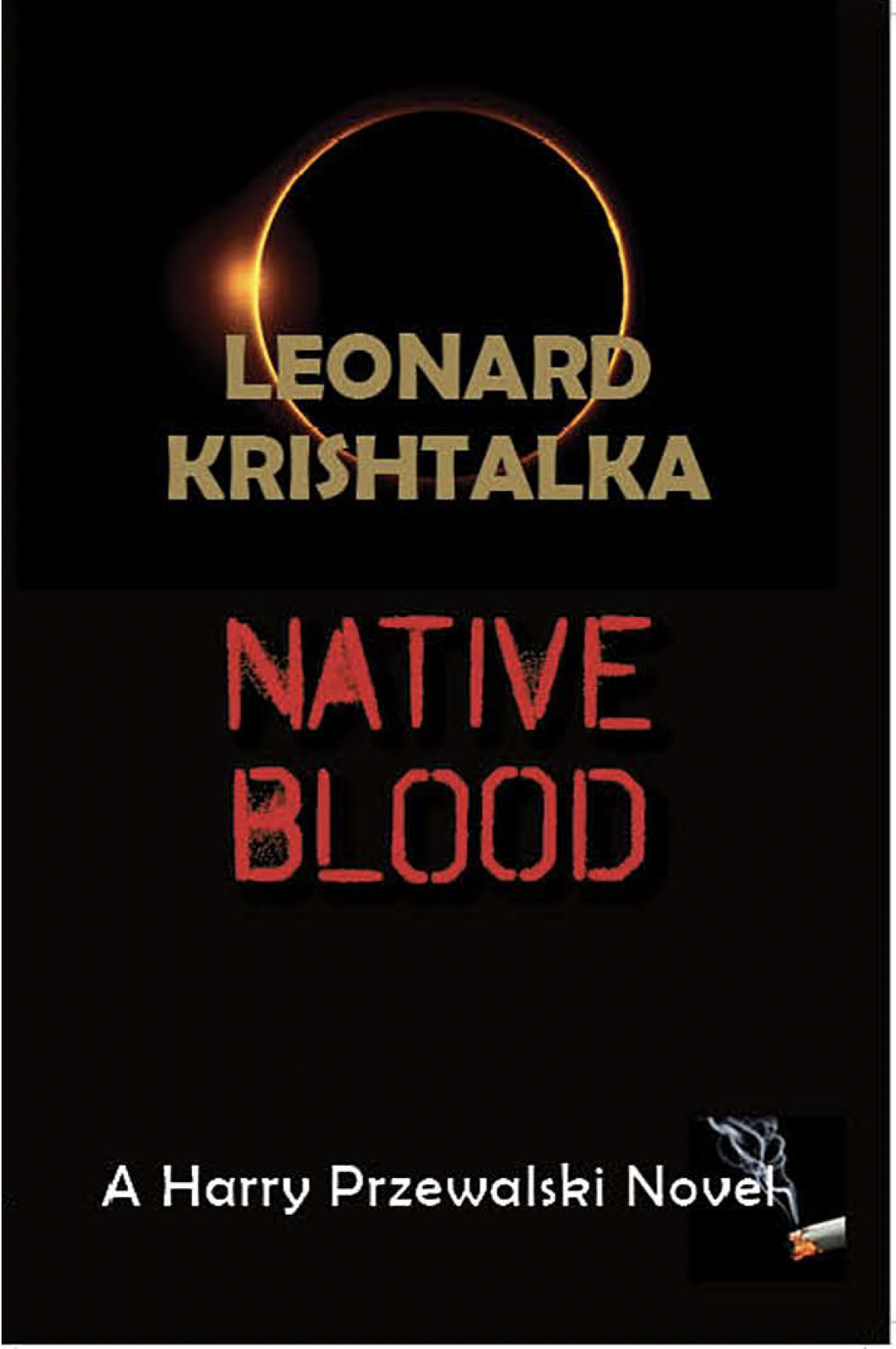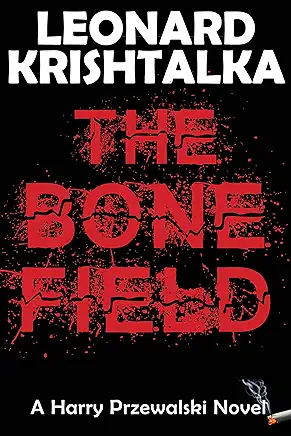I had the pleasure of meeting Kris this summer at the American Library Conference in Chicago. I learned that we have a couple of things in common: our love for hardboiled detective novels and a passion for science. He is the author of the Harry Przewalski series. I’ll let him tell you about it.

1. What do you and your protagonist have in common?
Quite a few traits. One, is trying to quit smoking. Harry Przewalski, the private investigator in my murder mysteries, rolls his own cigarettes using fine Dutch tobacco, Drum. So did I for 20 years, until browned fingers and a beginning cough told me to toss it.
Second are the intrigues of paleontology and archeology. Harry was once a paleontology student––dinosaurs, and fossil mammals, Neandertals. Then, a horrific tragedy in his life––the brutal murder of his fiancée––made him escape to a desert war, and come back with a gun and a license to detect.
As a paleontologist, I’ve been lucky enough to lead and work on expeditions throughout the fossil-rich badlands of western Canada and the U.S., Patagonia, Europe, China, Kenya, and Ethiopia, excavating and studying the past life and cultures of the planet. So, Harry knows what I know––or what I get to look up.
Third, we are both cyclists, riding the open road under an endless sky, the land rolling to the horizon. Harry’s father was a domestique on the European pro teams racing the Tour de France. Now he runs a bike shop in Pittsburgh refinishing traditional steel road bikes.
Although I am not Harry, we share the passion of ideas, the kinds of ultimate questions asked by the sciences, the humanities, and art about life and the human condition. For example, during the past 3.5 billion years, hundreds of millions of species came and went on land and in the waters — from tiny, one-celled algae to the acknowledged king of beasts that kidnaps the imagination of every child, Tyrannosaurus rex. What triggered these explosions and extinctions of life on Earth? So, all of us, in a sense, share this passion, trying to find meaning in the intrigues of a vanished world imperfectly preserved. And I think Harry and I have both arrived at the same conclusions: Nature is not as simple as its observers. And the meaning of life is … well … change.
- How long have you been writing? What was the motivating factor that got you started?
I was raised in a home in which the most important currency was “the word” —books, magazines, literature of every kind. So, writing, like a tick, entered the bloodstream early. So, I ended up with two careers that ran in parallel: professional paleontologist and author/novelist. The writing often crossed freely between the two. As a research paleontologist at the Carnegie Museum of Natural History in Pittsburgh, I seized on the opportunity to write a bi-monthly popular column for Carnegie Magazine about the fabulous intrigues of nature. It freed me to, as they say, “write what you know”, to re-script esoteric, complex science, such as dinosaur extinction or the Piltdown Man fraud into an entertaining “whodunit.” Dinosaur Plots is a collection of some of those columns. In Pittsburgh and in Lawrence, KS, my current home, I’ve also had the opportunity to write op-ed pieces countering the anti-science movement in K–12 and higher education. In the end, complex ideas and larger themes required longer stories than a column or op-ed piece––hence the novels.
3. What do you want most for your readers to come away with after they read your books? What themes do you regularly employ in your writing?
Good question. The four Przewalski novels have overarching themes. A major one is excavating the layers and fault lines of the human condition. So, The Bone Field investigates a paleontologist murdered for scientific glory, for fame — one of those fault lines: “The rage for fame infects great and small; better be damned than mentioned not at all.” John Wolcot, a Scottish satirist, 1700s.
Death Spoke, the second novel in the series, digs into the archeology of prehistoric cave art: Who painted the spectacular bison and deer and mammoths and horses in the caves of France 12,000 years ago? Who were the artists? Why didn’t they paint the trees, or sky, or clouds, or mountains, or streams outside the caves? Amid the venal scientific strife surrounding these questions, there are the fault lines of vendetta, of a horrific atrocity, of long-hate, and of murder.
In The Camel Driver, Przewalski uncovers scientific sin and human redemption — a bombshell Neanderthal discovery worth killing for; and how anthropology, at its origin, birthed, blessed, and broadcast its canon of racial superiority. “Exhibits display the bigotry of their time,” a museum curator tells Przewalski, referring to the grave-robbing and taxidermy of indigenous peoples for museum displays and to the kidnapping of “exotic” natives for human zoos and world fairs.
Native Blood, the fourth in the Przewalski series (Dec. 6 publication date) continues these themes––see below in “Tell us about your latest book.”
There is a companion theme to the Przewalski novels: how nature — its fluxes, its forces, its temperaments, its historical contingencies — can be a metaphor for the human experience. Quoting from The Bone Field about the badlands:
“Weathering was ceaseless, this endless war of attrition between earth and sun and wind and rain, the land trying to stay in equilibrium with the elements — and failing. It was like the geology of a love affair, Harry thought, the silent abrasion of its intimate contours to a flat, monochromatic terrain.”
And, quoting from The Camel Driver:
“The rhinoceros horn and elephant ivory had been stolen from the museum. Likely, by now, they’d been ground to powder, cut with baking soda, and shipped to Asian market stalls as a male erector. Elephants and rhinos were harder to poach than old museum specimens. It was ironic, Harry thought, organs of species on the brink of extinction being harvested for procreative purposes.”
- Tell us about your perfect writing day.
Rain, a couple of espressos, some old jazz, phone and internet turned off, a half-empty pack of Drum and blue Zig-Zag papers lying on the desk reminding me that I won’t smoke. And when the writing starts, having the horse suddenly pull the wagon––the novel––down an unexplored alley. That is one of the most rewarding moments.
- Tell us about your latest book.

Native Blood unravels the cutthroat war between geneticists and archeologists over the earliest peopling of the Americas at least 15,000 years ago. In the back-biting world of academia, a biological anthropologist studying the genetics of native peoples is bludgeoned to death. Appropriately, he is found with his head lying in a pool of DNA he’d extracted from indigenous peoples. The university chancellor’s son, an Athabascan native and archeology student, is charged with the murder. He’d led a violent protest against the genomic studies of the first Americans.
Przewalski becomes immersed in a tangle of deceit, personal vendettas, unethical research, archeological fraud, and a mysterious figure gunning for him. A web of treachery surrounds a missing flint spear point that threatens to upend careers and what we knew about the first Americans. Was the anthropologist killed over an explosive theory that the Americas were peopled at least twice from different continents more than 15,000 years ago? The stakes in this race for scientific discovery and fame are murderous.
Native Blood also tackles the conflicts between genetics, archeology, and the Native Americans’ own origin stories. It reveals anthropology’s long entanglement with race and racial theory and the darkest shadows cast by the unspeakable acts of the Indian Residential Schools.
In the end, Przewalski uncovers a diabolical plot and a stunning climax, one in which justice, as a human invention, makes mistakes.
- What is the most challenging area for you as a writer?
Each of the four Przewalski novels, each “case,” has a science intrigue — dinosaurs, prehistoric cave art, anthropology’s origin as a racialist science, the earliest peopling of the Americas. Each is also wrapped inside a human intrigue, the dirty underbelly of people’s lives, the betrayal, the fraud, the rage for fame––and murder––buried beneath the science of shards, skin, and bones.
As such, the Przewalski series presents two challenges. First and foremost is the challenge common to the novel — plot, characters, voice, tension, narrative drive. There is no better or more enjoyable primer for this art than reading and re-reading the best writers in the genre. One also learns what to avoid.
The second challenge is weaving the scientific threads into the plot, characters, and narrative so that the reader is as immersed in the science mystery as they are in the murder mystery. Both the science and murder “whodunits” must be indistinguishable — equally compelling, equally “page-turning.”
The writing challenge was different for my fifth novel, The Body on the Bed, a historical fiction/true crime. A lurid murder that occurred in Lawrence, Kansas in 1871 and the sensational trial that followed attracted reporters from newspapers across the nation—all this amid the social upheaval of post-Civil War Kansas and the fight for suffrage for women and Blacks. The heroine is the first woman newspaper reporter west of the Mississippi.
Writing historical fiction is a highwire act of intellectual honesty. One must be true to the essential, documented history. But, within that stricture, one takes the creative liberty to dress and dramatize the historic stage, the characters, the costumes, the settings, the language, the dialogue, the encounters. The writer lives on that stage, breathing in the air and odors and sights and sensibilities of the time and place. But to alter the essential, documented historical facts for drama is, in my book, intellectual fraud, in which the writer becomes a huckster, grifting the reader with a cheap trick.
As such, the historical events in The Body on the Bed — the murder, the trial of the century, the verdict, the aftermath — took place during 1871–1872 in Kansas. The facts were derived from newspaper accounts and historical and legal documents, including the transcript of the trial (1051 handwritten pages). Excerpts were used verbatim or rephrased and expanded for dramatic effect. Although the principal characters were real, literary license sculpted their individual personas, dialogue, and appearance. The Kansas settings — streets, houses, jails, courtrooms, interiors — reflect historic town plats and building records. The language is faithful to the expressions, grammar, and spelling of the time, a good deal of which is now considered either incorrect or antiquated.
I had one disappointment. I could not identify a specific brand of bourbon whiskey that the heroine would have sipped in Kansas at that time. I chose one that was popular then in Missouri, next door.
- What motivates you to write?
Tough question. I think the essential motivation is what I wrote above: excavating the human condition. For me, it’s the purpose of literature, of all of the creative arts. That might seem incongruous for the murder mystery genre. But the best works in this genre explore the same fault lines as do the acknowledged classics in literature, from The Book of Job to Shakespeare, to Dr. Faustus, to Toni Morrison. The characters in the best mystery novels are just as heroic and flawed, the relationships just as conflicted, the seven deadly sins just as deadly, the gritty underbelly of place and people just as gritty, and the writing just as evocative.
- How did you develop the idea for your most recent work?
Native Blood began when I stumbled across the 1896 discovery of the oldest Native American spear point found embedded against the shoulder blade of a fossil male bison killed 13,000 years old and preserved in a sandstone bluff above Twelve Mile Creek in western Kansas. That was a discovery that should have shocked science and the nation––the first evidence of humans in North America during the Ice Age, thousands of years earlier than anyone had ever thought. But it didn’t because the spearpoint mysteriously disappeared. All that is left is a photograph of the projectile point, a drawing from the photograph, and a few, short published accounts of its discovery.
The disappearance of the spear point was covered up and then blamed on an alleged theft at a scientific soiree at the home of the chancellor of The University of Kansas, where, as the story goes, it was passed around and pocketed by one of the attendees. Had it not been lost, the dominant archeological culture of North Americans 13,000 years ago would be called Twelve Mile Creek, not Clovis, the latter named for a cache of mammoth bones and stone artifacts discovered 37 years later, in 1932, near Clovis, New Mexico. It’s the contingencies of history.
The Twelve Mile Creek spear point is enmeshed in a much larger archeological drama: When did the first people set foot in the Americas? Where did they come from, and how did they get here? Over land? Over sea, hugging coastlines? Both? Was there are single origin or multiple invasions at different times from different continents? The science––genetic, archeological, linguistic, geological––is intense, often personal, even vicious. In Native Blood, it is vicious enough for murder. For me, the most important thread in this weaving is how anthropology’s early teachings about Native Americans resulted in the attempted decimation of the peoples and their cultures.
- Name three authors you would recommend and tell us what you like about their writing. Name three writers from whom you have drawn inspiration and tell us why.
I grew up on Rex Stout, rereading the Nero Wolfe series every few years, in which Archie’s breezy, sardonic narration is offset by Wolfe’s pompous, Johnsonian speeches. The stories are entertaining, almost mannered, but what stayed with me was Stout’s craft as a writer, as a storyteller. Raymond Chandler introduced me to the streetwise, hard-boiled private eye, the simple, short, declarative sentence, the wisecrack, and how the gritty alleys of place fester the strands of human rot.
I continued with his successors: Ross MacDonald, Dorothy Hughes, and James Crumley, whose prose is unmatched. Elmore Leonard is the master of dialogue. He paints his characters with their words, their expressions, their phrasing, their syncopation. When I read these authors, I find myself envious: “that’s a sentence I wish I’d written.” Same holds for current writers (sorry, more than three) in the genre: Ian Rankin, Lawrence Block, James Lee Burke, Sara Paretsky, James Elroy, Megan Abbott. Readers can’t go wrong here. Start with James Crumley’s, A Kiss Before Dying.
- What was the best writing advice you ever received, and why was it valuable?
The best advice was “take chances.” Art and science are subversive storytelling. They’re the risky search for uncomfortable truth. Writing a novel isn’t meant to be comfortable. As George Orwell said, “Good novels are written by people who are not frightened.”
The novel, for me, is an unbridled horse. Let it take you down unexpected, unexplored alleys. Let it violate the storyboard, if you fashion one — I don’t. Those alleys, as I wrote above, are among the most rewarding moments of writing.
As other authors have advised, let the “voice” emerge unforced without worrying about being off-key. Be smart and scrupulously forthright. I remember Steinbeck’s tenet: “The discipline of the written word punishes both stupidity and dishonesty.” Write what you know; if you don’t know it, immerse yourself in the research.
Finally, make readers want to pause throughout your novel to mutter, “Damn, I wish I’d written that.” Each elegant sentence is, for me, a novel’s literary heaven. Because, otherwise, as William Styron quipped, “… writing is hell.”

Leonard Krishtalka enjoys two parallel careers––professional paleontologist and author/novelist. As a novelist, Krishtalka explores the human condition through the detective genre and the award-winning Harry Przewalski novels: The Bone Field, Death Spoke, The Camel Driver, and the forthcoming Native Blood. His fifth novel, The Body on the Bed, is historical fiction that investigates a murder and sensational trial in 1871 amid the social upheaval of post-Civil War Lawrence, Kansas. Krishtalka is an op-ed contributor to the Lawrence Journal-World, a past columnist for Carnegie Magazine, and author of the acclaimed book Dinosaur Plots.
As a paleontologist, Krishtalka has worked on expeditions throughout the badlands of Canada, the US, Patagonia, Europe, China, Kenya and Ethiopia, excavating and studying the past life and cultures of the planet. He has held academic posts at the Carnegie Museum of Natural History, the University of Pittsburgh, The National Science Foundation, and The University of Kansas, Lawrence.
Native Blood Blurb
In the back-biting world of academia, a biological anthropologist studying indigenous genetics is bludgeoned to death. The university chancellor’s son, an Athabascan native and archeology student, is charged with murder. He’d led a violent protest against the genomic studies of the first Americans. PI Harry Przewalski becomes immersed in a tangle of deceit, personal vendettas, unethical research, and archeological fraud.
In Native Blood, the fourth Harry Przewalski novel, a web of treachery surrounds a missing flint spear point that threatens to upend careers and rewrite the history of the first Americans. Was the anthropologist killed over an explosive theory that the Americas were peopled at least twice from different continents more than 13,000 years ago? Przewalski is immersed in the intense conflicts between genetics, archeology, and the Native Americans’ own origin stories. Underlying the diabolical plot is anthropology’s long entanglement with race and racial theory and the darkest shadows cast by the unspeakable treatment of indigenous peoples.
“An exceptionally crafted thriller. A fantastically written and immersive read.” Readers Favorite.
Links
Email: kris4138@gmail.com
Website: leonardkrishtalka.com
Twitter: https://twitter.com/LKrishtalka
Amazon author page: https://www.amazon.com/stores/Leonard-Krishtalka/author/B07THRXM5L?ref=ap_rdr&store_ref=ap_rdr&isDramIntegrated=true&shoppingPortalEnabled=true
Buy buttons
https://www.amazon.com/Native-Blood-Harry-Przewalski-Mystery/dp/1960462172
https://anamcara-press.com/product/native-blood/
https://anamcara-press.com/product/the-harry-przewalski-mystery-series/
https://anamcara-press.com/product/the-body-on-the-bed/


Thanks for being my guest today, Kris!